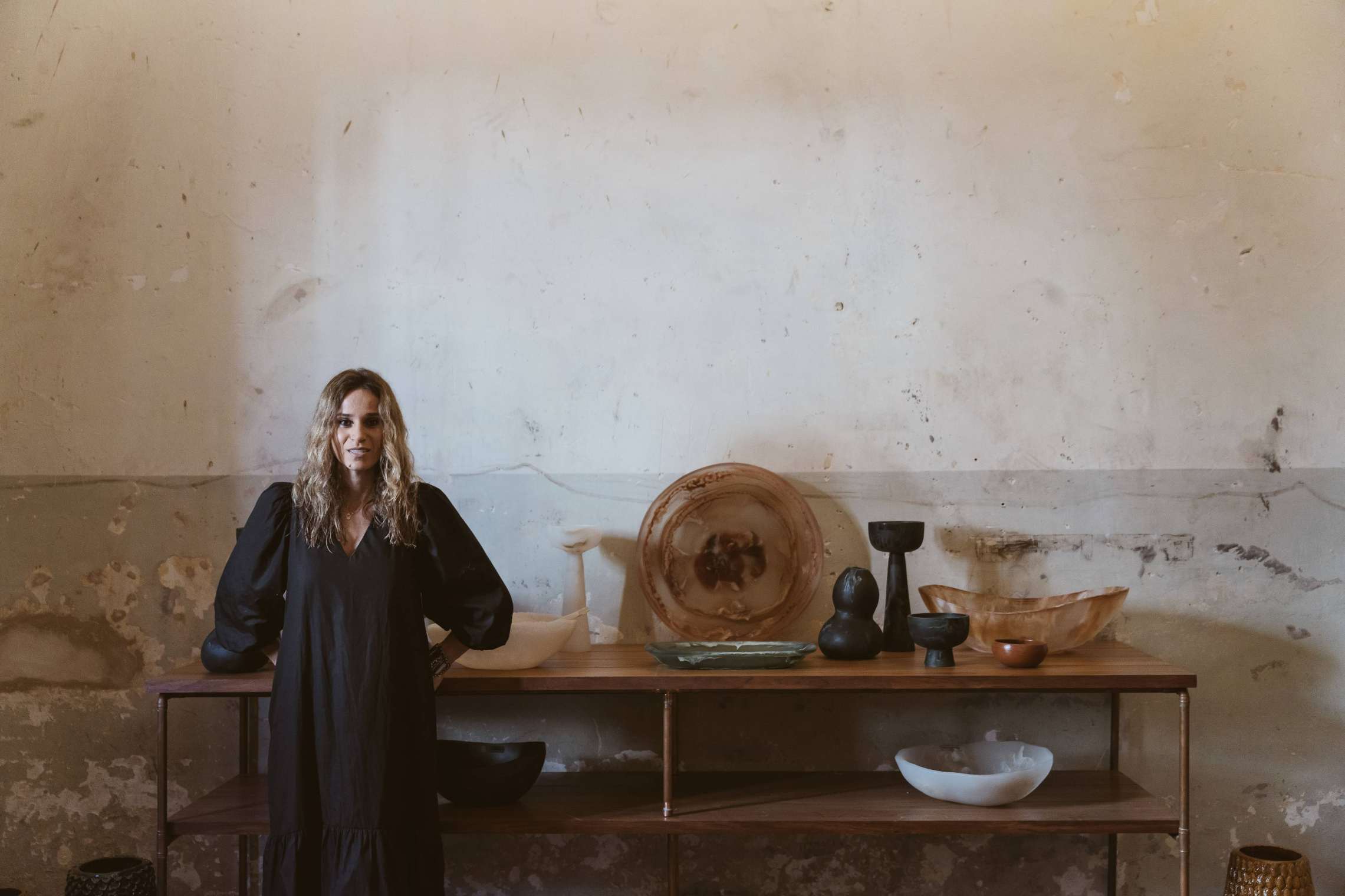
Monica Calderon with her homeware pieces for Monica Calderon Studio. Image by Tamara Uribe.
COFFEE WITH
MONICA CALDERON: “I FELT THE RESPONSIBILITY TO CONNECT THESE TWO WORLDS”
Name: Monica Calderon
Profession: Designer, Curator and Founder of Casa Escuela
Nationality: Mexican
Zodiac sign: Aquarium
Instagram: @monicacald
LATINNESS: Monica, how did you enter the design world?
MONICA: I studied design in Mexico. Then, 25 years ago, I married my husband Ezequiel Farca, who is an architect. Being by his side has been a source of inspiration to create projects together.
He had his office in Mexico, but was more focused on interiors and architecture. When I entered his space, I said: “Hijole! I have to complement this journey.” So, I began working with artisans and manufacturers in Mexico and exploring various materials.
Twenty-five years ago working with artisans was very different from what it is today. This new generation has much more exposure with social networks and the world has become more global. When I started, it was much more difficult to access this talent.
Even so, through exploring materials, I created a new line of accessories: lamps, textiles, tableware… We’d ask ourselves, “What are the basics you can’t buy in Mexico and have to go abroad or import?” And we made them.
One day, important distributors from New York entered the store in Polanco and fell in love with two or three products that we’d made with this material. They asked me to design a huge collection for their homeware line, so I did it. The order was so big that I essentially had to set up a factory.
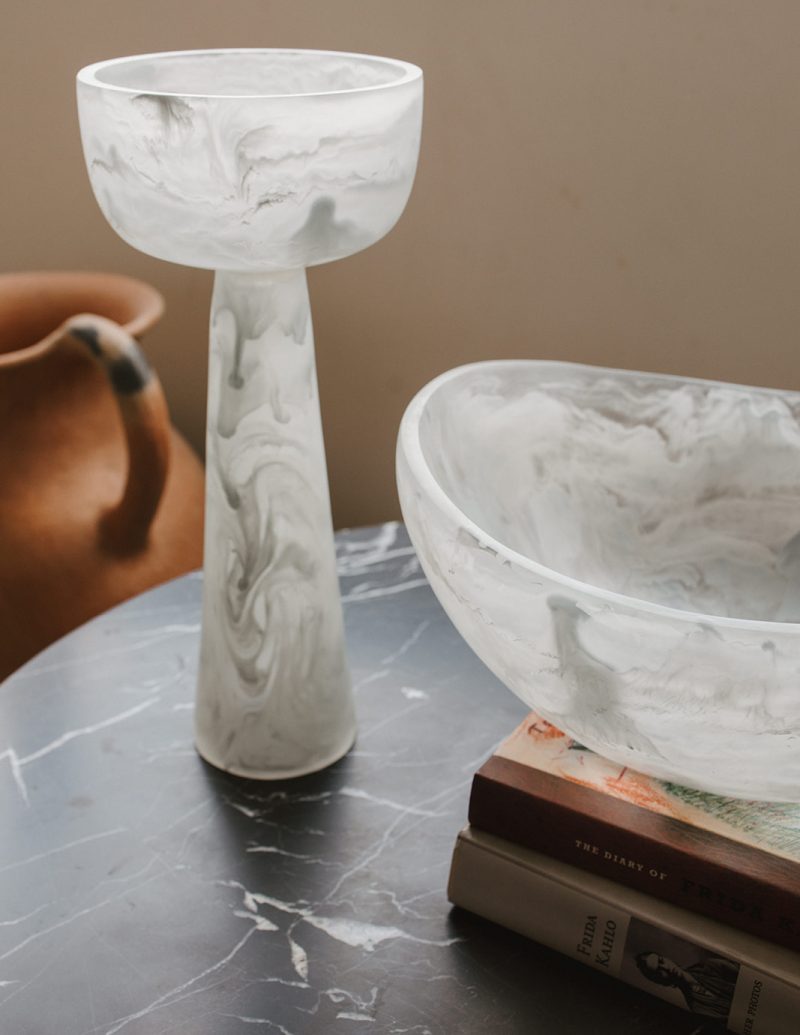
Resin homeware pieces from Monica Calderon Studio. Images by Gaby Bolivar.
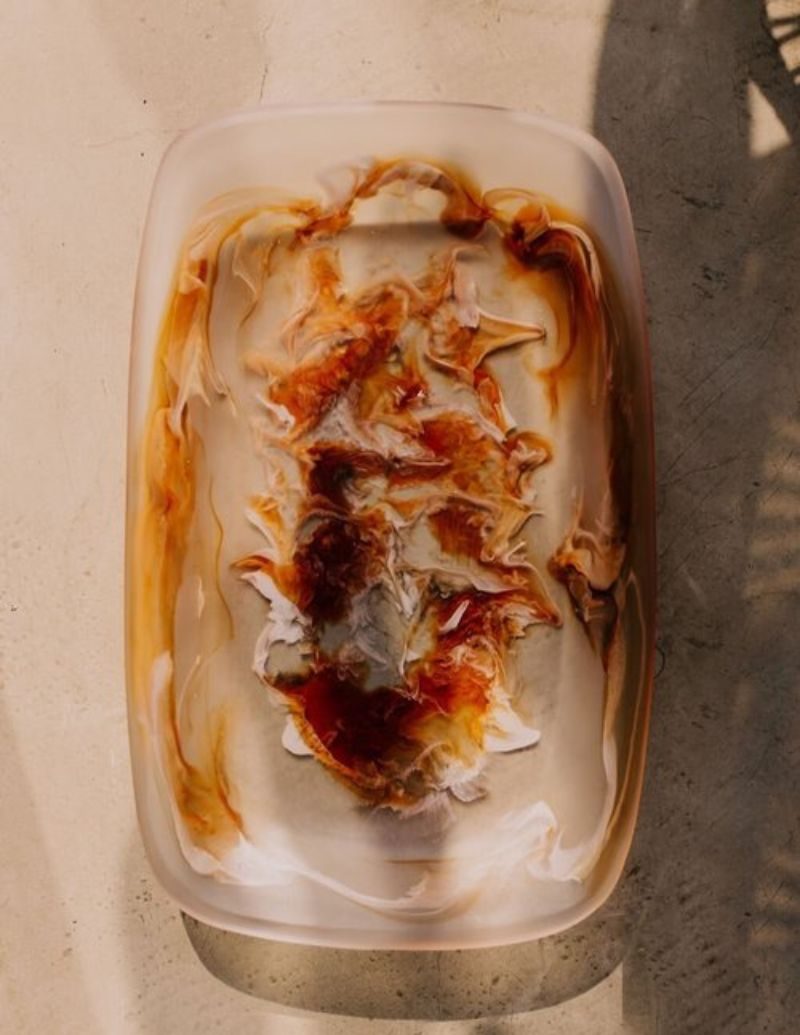
LATINNESS: You mentioned exploring materials. Your work stands out for the use of resin polyester. Why did you choose this particular material?
MONICA: I stumbled upon resin through the research, but I didn’t think I’d end up working with it for so many years.
I continued working on another product line, but focused much more on resin. In fact, I’ve become the expert “indexologist” of this material. My factory is a kind of kitchen where we experiment a lot with colors, textures and so on.
LATINNESS: What led you to Los Angeles?
MONICA: First, we went to do a Master’s degree in Barcelona and lived there for three years. It was a very enriching experience because the city was a design mecca at the time. It still is, although a lot has changed since then. We then went back to Mexico for a few years before moving to Los Angeles.
We came to LA a lot for work. In the meantime, we had triplets, who are now 19 years old, then another baby arrived. Ezequiel and I had clients here– he was doing houses and I was working with some stores.
There was a connection with California, first because of its proximity; second, because of the job; third, because we were in the field of design, art, architecture and so on. We began to see that there were many similarities between the history of design in Mexico and California.
Plus, we were always captivated by mid-century architecture, so we made a radical decision to move. Ezequiel did a Master’s degree at UCLA, which served a bit as a pretext, and then I came with our four little kids.
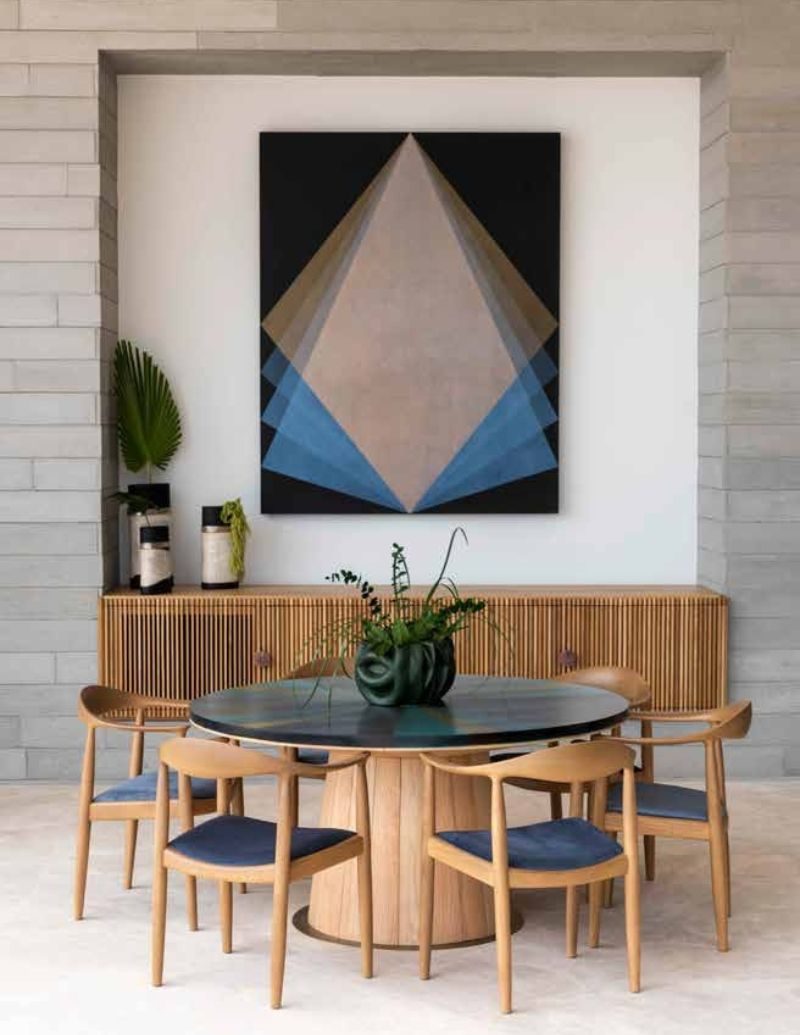
Designs for CALA; derecha: Mexican designer Monica Calderon. Portrait by Tamara Uribe.
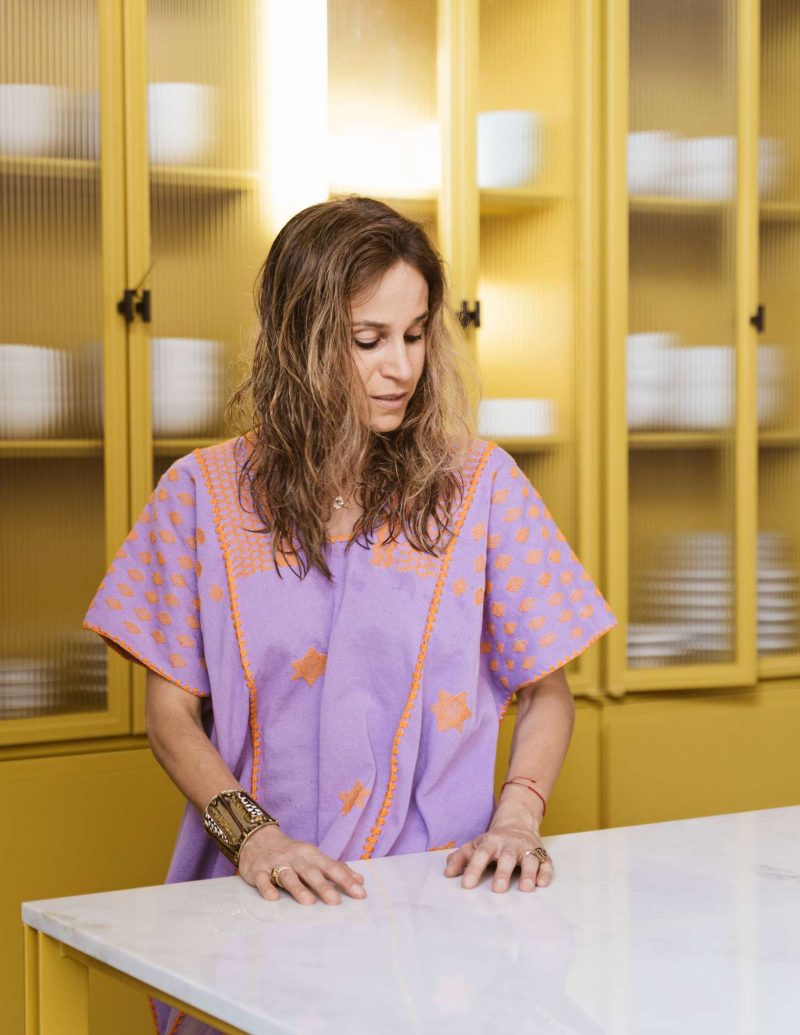
LATINNESS: Was there an immediate connection to the city?
MONICA: It was a challenge, not only as a mother, but also because I already had a super established company that I left behind. Also, moving away from your culture, your family, your roots, from what you’ve built in a lifetime… But we are super pioneers and super free souls. I take my children wherever I go— we believe in traveling, exploring, knowing and evolving.
We felt that this was our path and many things began to happen here, amongst them were projects in which we could connect these two worlds and cultures. I began to develop other types of concerns and passions, which then inspired many of the things I’ve done here.
LATINNESS: Although a move to a new country is challenging, in our experience, when working in industries like ours, we’ve found creativity opens certain doors. Would you agree?
MONICA: Truthfully, 14 years ago the perception people in LA had of Mexico and what it meant to be a Mexican designer or architect was very different from today. It was a big challenge to be accepted despite having so many Mexicans here.
It was then when I began to feel I had a mission here. I wanted to change the perspective and the narrative of how people perceived this creative community because there’s a lot of history behind it and many similarities and connections between the two cultures.
Since I had this trajectory and this road traveled, I felt this responsibility to connect my two worlds– the two creative communities– and start projects that changed that perspective and gave visibility to all this talent coming from Mexico.
Also, being far away from Mexico and from my factory, I had to look for a creative outlet where I could apply myself to other projects. Of course, without abandoning my business, which I’ve been able to run from a distance. I have my system and it’s worked somehow.
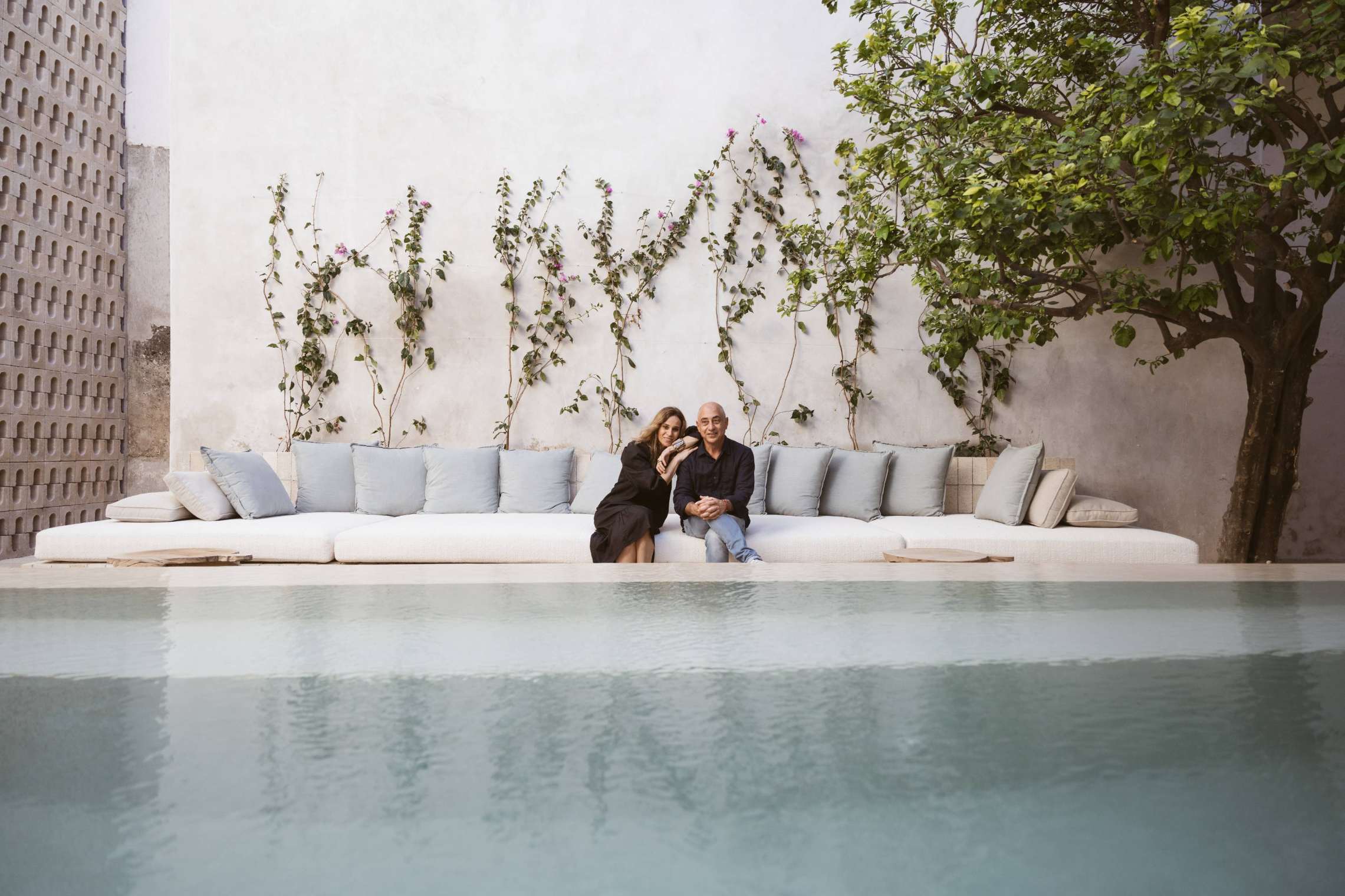
A creative duo: Monica Calderon and Ezequiel Farca. Image by Tamara Uribe.
LATINNESS: And how has this materialized?
MONICA: Curiously—because this is how the world and destiny works—, I was invited to participate in a project at the Los Angeles County Museum of Art (LACMA). They were doing an exhibition called Lost in Translation, which involved Mexican and Californian design and architecture from the twenties to the eighties.
The Mexican curator Ana Elena Mallet was curating it here with Wendy Kaplan, and they invited me to be part of this project, particularly with the museum store, along with Maria Eladia Hagerman, who is a very close friend of mine.
The two of us curated the store for this exhibition. We invited both Mexican and American artists. I delved into the influence of those years and the designers who were doing things here and there. I did a lot of research on the similarities between these two worlds and got very involved in the story.
The exhibition was a success, and soon after, there was another important art event in LA called PST:LA. They also invited me to curate and form part of the project that brought together 14 galleries from Latin America.
Later, I worked on an exhibition at the Blackman Cruz Gallery, in which I brought classic furniture from the 50s by Mexican and Latin American architects. From there, I got involved in a foundation in Oaxaca called Innovating Tradition, and brought their clay pieces to create a whole panel. I wanted to create a platform to share that work.
LATINNESS: Has collaboration always been important to you?
MONICA: Yes, I’ve done several projects and really enjoy collaborating with others. I love sharing the creative process, my journey and creativity with someone else.
When we’ve done projects, not only with designers, but also with artists, each process is different. You enter their world, their creative space, and each one is distinct.
At the end of the day, our childhood stories and our journey form us as creatives, and it’s very special, not only to design or create something together, but also to develop relationships. I’m very much about connecting with people. Curatorship is always present in my head, that’s why I’m always inviting more people to collaborate.
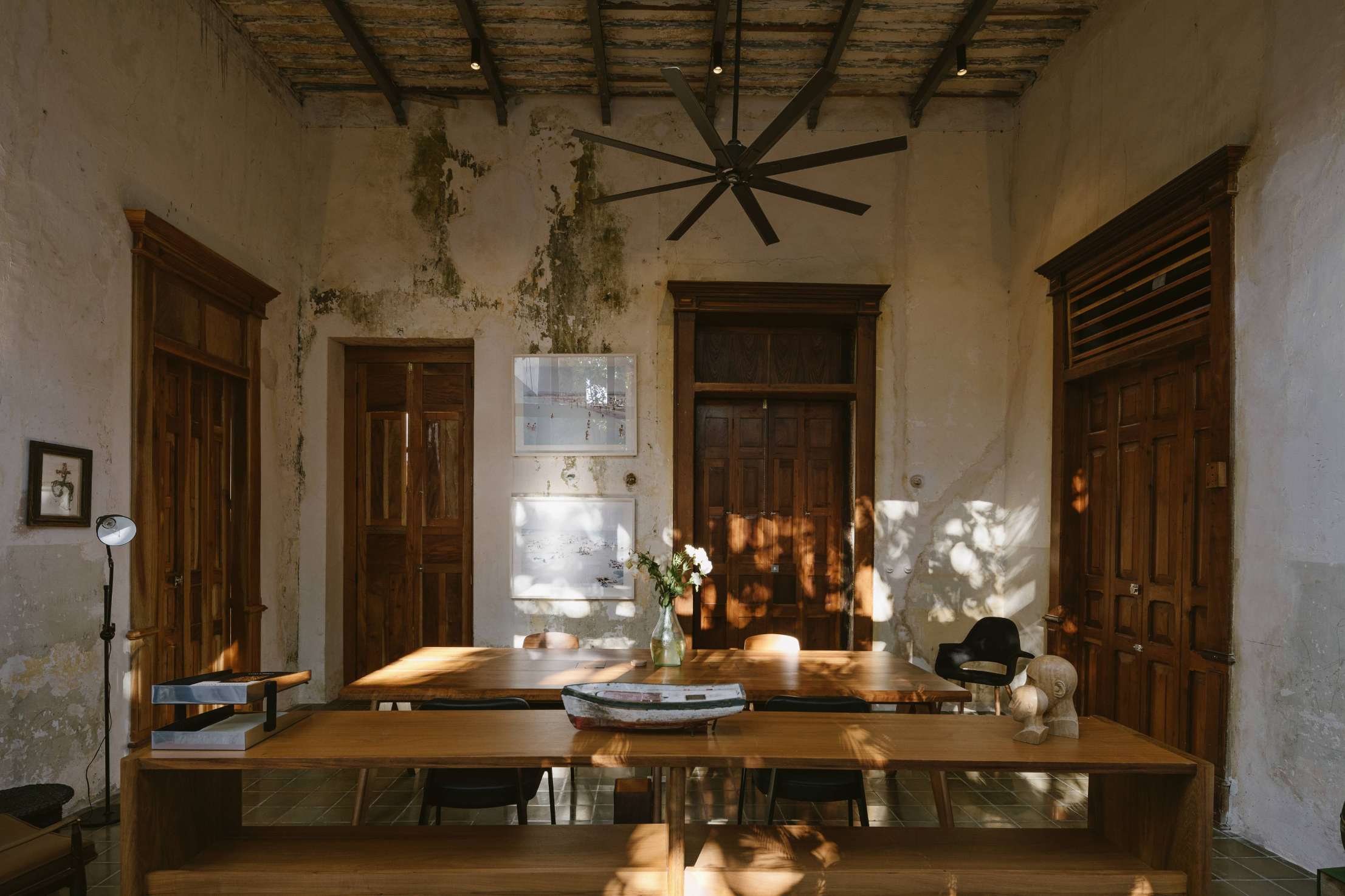
Image by Tamara Uribe.
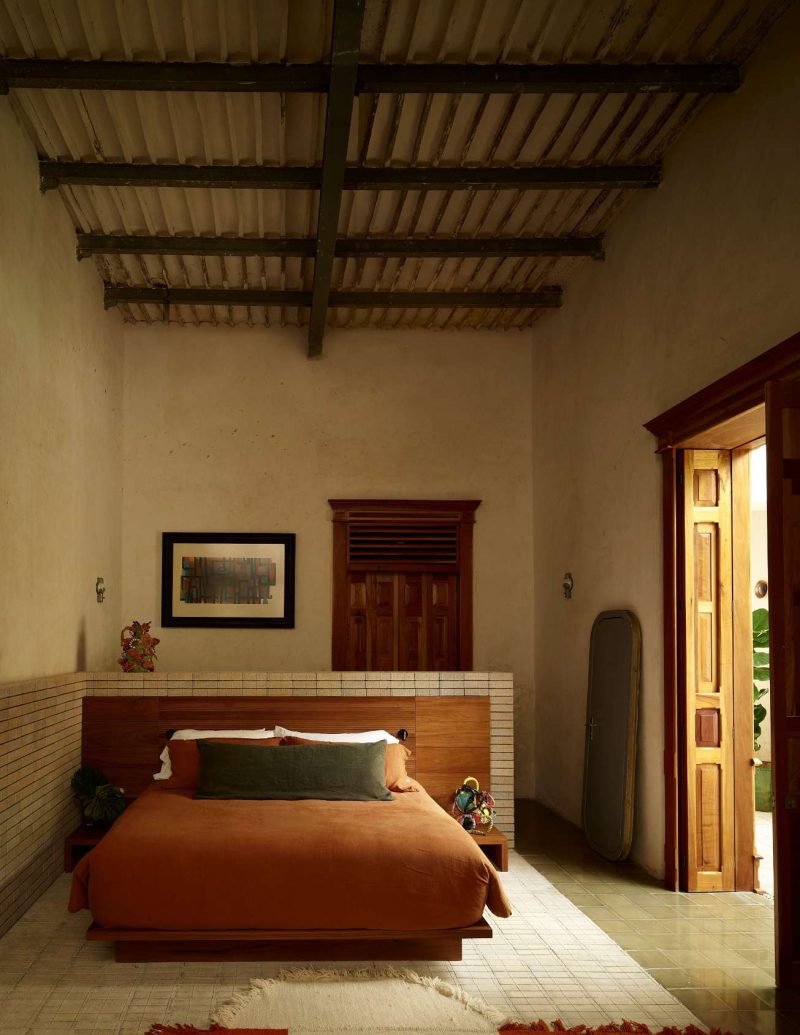
Views of Casa Escuela, in Merida, Mexico. Images by Fernando Marroquin.
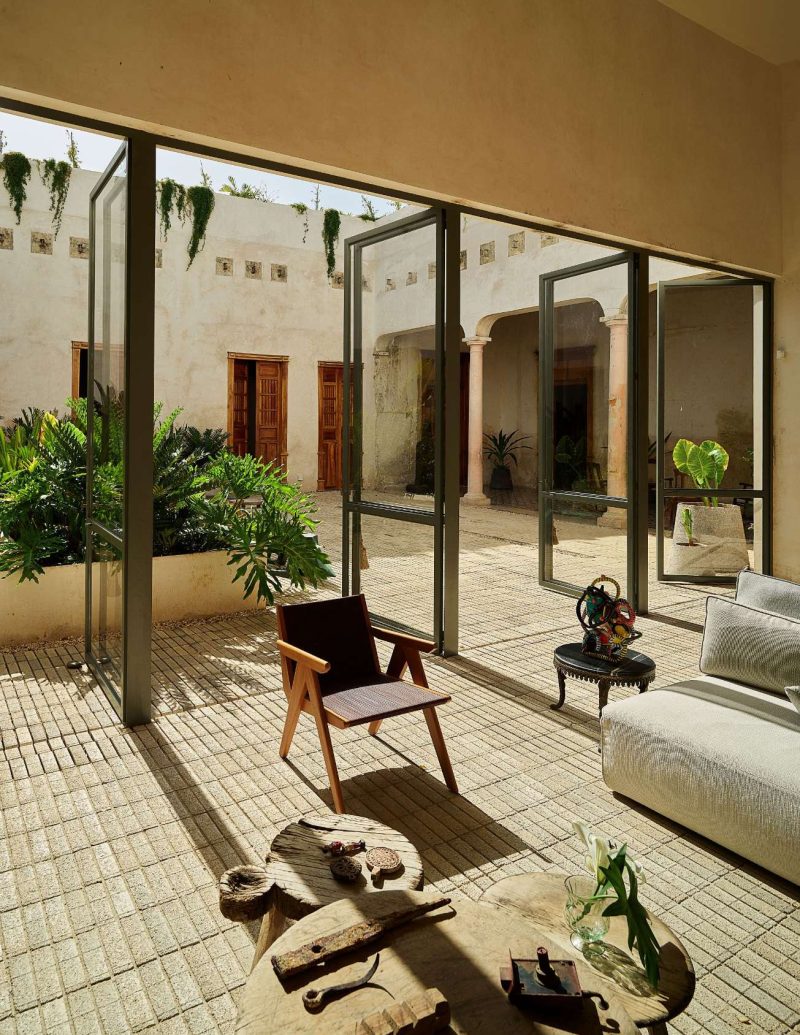
LATINNESS: Let’s talk about your most recent project, Casa Escuela. What sparked the idea?
MONICA: When I started doing all these projects here, I loved it because it brought in people from Latin America. Eventually, I started to feel the need to connect people from here and there in this creative community.
One day, we took a trip to Merida. We had the intention of taking our children on these trips to Mexico to make them understand their history, their roots and where they come from. We didn’t want them to lose that part of their past, their family and their traditions, especially because of our connection to all these projects in Mexico.
We’re dreamers and we look for properties wherever we go. A friend of ours there told us: “You have to come see this place.” We walked in and were immediately enamored.
It was originally an old school in the 1920s and it has a very particular, magical energy. Although it had been abandoned, it still felt very alive and vibrant. The history of architecture, of space, of the essence, of the concept spoke to our hearts.
At the back of the property was a vacant lot. You could see the original floors, the woodwork and the old walls hand-painted with these magical colors. Our immediate thought was, “we have to do something here”.
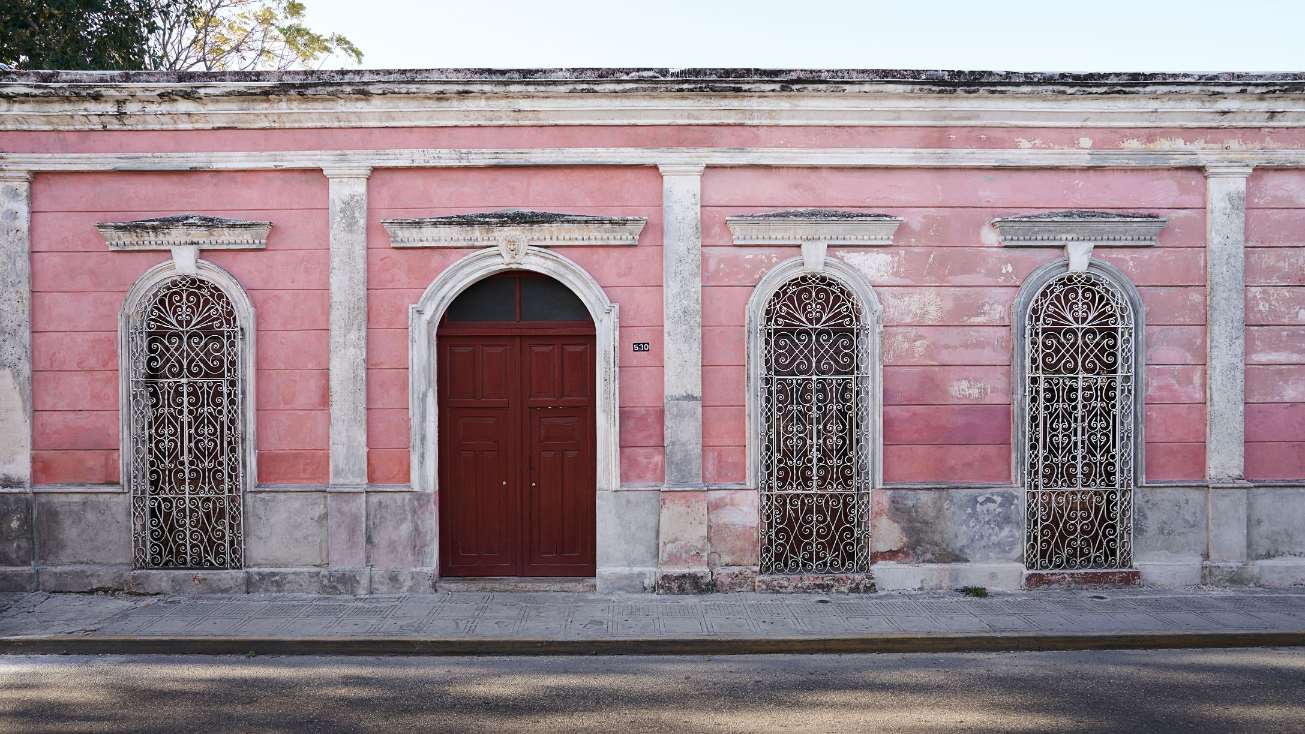
The facade of Casa Escuela. Image by Fernando Marroquin.
LATINNESS: Why Merida and not Mexico City?
MONICA: After living outside of the country for 14 years, and with our children growing up, we reflected and thought, “If we’re going to choose a place in Mexico, it won’t be Mexico City.”
Yucatan has something magical, it has a strong culture. There’s incredible history and ancestral wisdom in all fields, from gastronomy and medicine to astrology or crafts, amongst many other things. We decided to take the risk and, without much thought, bought the space. We said, “Eventually we’ll see what begins to manifest itself here.”
LATINNESS: And what manifested?
MONICA: We were inspired by the original theme of the school in order to continue our projects of sharing and inviting, not only with the creative community in Mexico, but also in Los Angeles and around the world. Always with the mission of connecting bridges.
We have all these rooms in front, which serve as a kind of exhibition space or gallery that overlooks the street. There’s another space in which there’s now a shop and several rooms for studies of different disciplines (writers, artists… everything). The spaces aren’t limited, nor the kind of people who are invited to participate.
Where the vacant lot was, we made a project from scratch, which is the house with rooms and a kitchen— it’s super beautiful. The idea is also to do residences with chefs and food activists. There’s a wellness component in the house. By having this sacred space in the kitchen, we invite people around the theme of food and health.
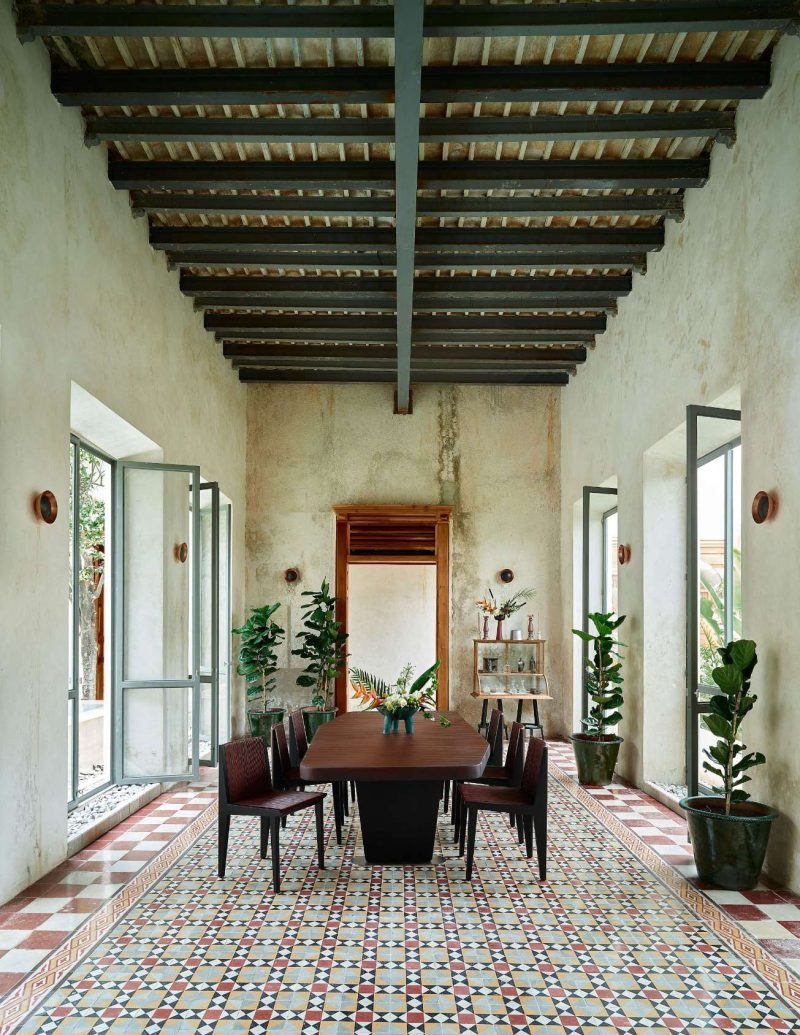
The dining room with a resin table designed by Monica and chairs by Ezequiel.

The kitchen at Casa Escuela designed by Monica. Images by Fernando Marroquin.
LATINNESS: A dream project! Why is it important to have these cultural spaces and artistic residences?
MONICA: To nourish this collective knowledge and to honor Mexico and its traditions. To build bridges with other places and pay homage to all this collective and ancestral wisdom. Also, to be an agent of social and environmental responsibility by bringing this entire global community of people with projects that create a positive impact and can create links with the local community, both in Merida and in Mexico.
We believe we have a great responsibility to make more than just a beautiful place and invite people to create, but rather something that leaves a mark. Above all, we have a responsibility to Mexico, which has given us so much. It’s thanks to the Mexicans that we can do this today.
LATINNESS: Merida is actually currently experiencing a renaissance of sorts. To what do you attribute this?
MONICA: It’s surprising to see all the people moving there and doing projects related to the creative community, both in art and restaurants. There’s an incredible boom.
The cultural richness of Yucatan is enormous, and it has a wonderful history. The colonial architecture is also beautiful; all these spectacular houses on Paseo de Montejo that enamor, the colorful facades, the cenotes, the pyramids, the haciendas, the beaches… it’s a place with everything.
The beauty of this 900-square-meter project in which Casa Escuela operates is that it’s in the center, five minutes from the zócalo. The cathedral and the main market are nearby, and there are many shops around the house. People who come to experience this creative process just need to step out, and they’re immediately in all the action of the city.
It’s a total inspiration to go exploring. I’ve discovered some beautiful places and incredible people. The Mayans are geniuses. It’s also a very safe place, so far. This has made people from outside feel like they’re in Mexico in the 70s or earlier. It gives us a lot of peace to be there.
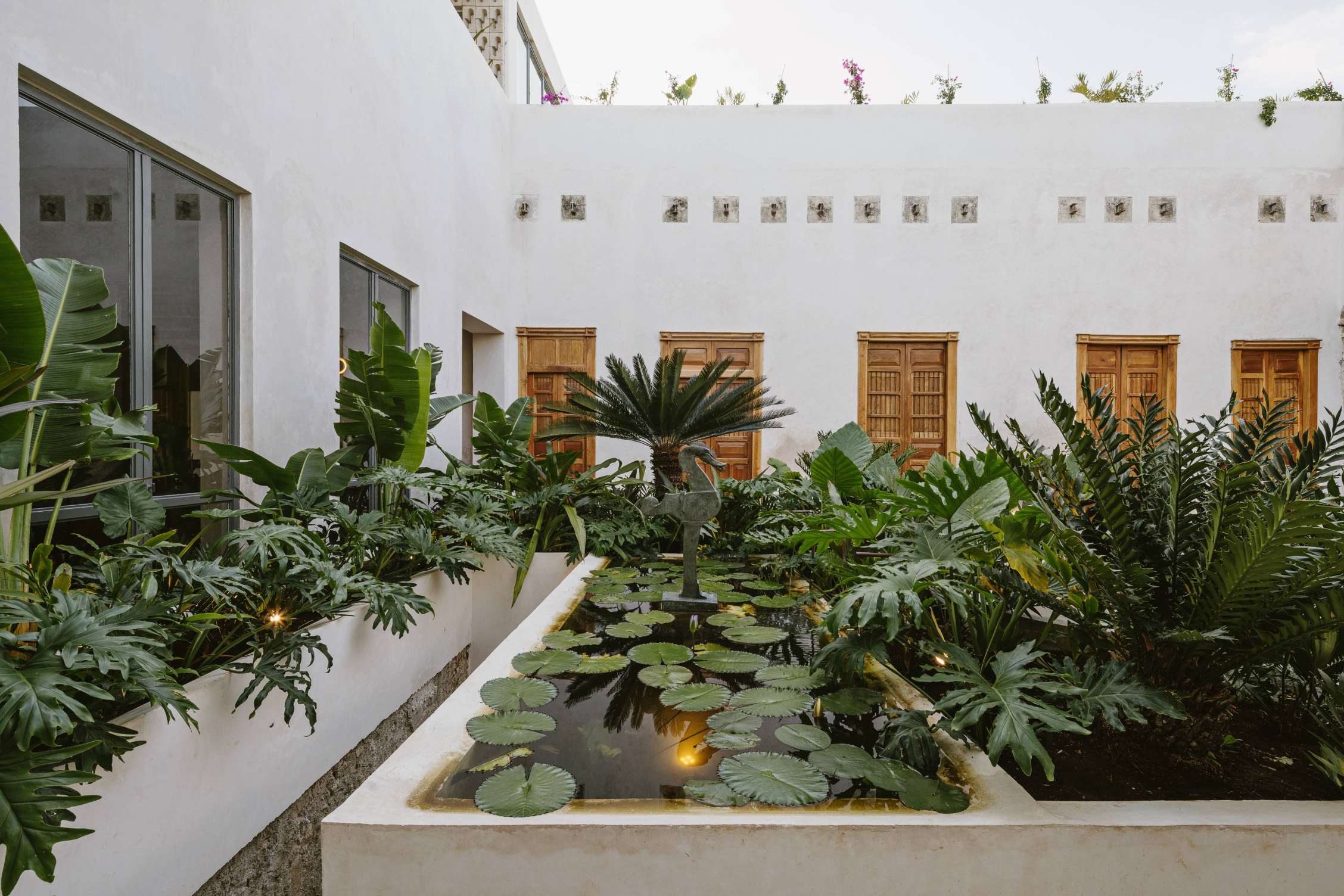
A patio at Casa Escuela. Image by Tamara Uribe.
LATINNESS: As a creative, how do you inculcate art in your children?
MONICA: By taking them with us wherever we go. Our children still don’t understand why we have this project in Mexico nor why we started it. When they first got there, they asked, “Why this house? We want new walls!” We have a media room where we project films or exhibition projects we’ve done, but they only want to know when we’re going to fix the walls.
One of our sons, who is studying fashion, began at a very young age to photograph and create a clothing line, and we’ve been very supportive of it. We’ve had this house for five years and it took four years to carry out the restoration, but today his interest is noticeable. He’ll now say, “I want to go!” He wants to see what he can do with the artisans there.
At the end of the day, my children have grown up in a very creative environment. My brother, Miguel Calderon, is also an artist— he just exhibited at the Tamayo. They grew up with this creative part of Ezequiel and me, of my family, and the reality is that they’re equally creative. We want this project to be theirs, as well, where they can eventually develop their own initiatives.
Creativity is a tool for well-being and mental health for them, and although some believe they are creative and others not so much, this part of our life has been very healing. We want them to use this tool that we’ve instilled in them throughout the different phases of their lives.
Images courtesy of Monica Calderon.
